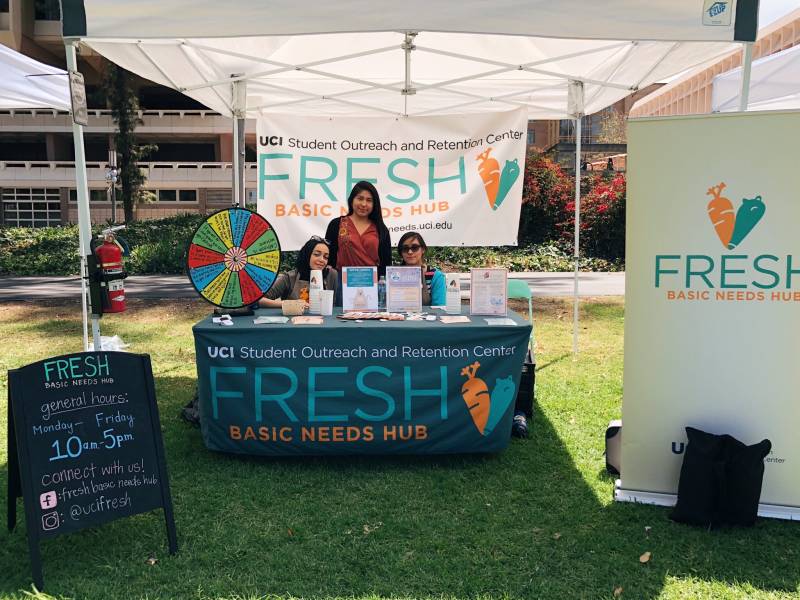“But because CalFresh is run by a different agency — it’s not part of the education system — I think it’s hard for students to navigate,” said Rothstein, Carmel P. Friesen Professor of Public Policy and Economics at UC Berkeley and the faculty director of the California Policy Lab’s UC Berkeley site.
The UC’s California Policy Lab collected the data for the report from four institutions: California Community College Chancellor’s Office, University of California Office of the President, California Department of Social Services and California Student Aid Commission.
In gathering data from these four agencies, the authors developed a database connecting college enrollment numbers, monthly CalFresh participation records, and annual federal financial aid (FAFSA) details.
The data points to differences in eligibility and take-up rates between students in the California community colleges and the UC campuses, as well as which students actually enroll to receive the benefits if they are eligible.
Data from the fall of 2019, the semester immediately prior to the COVID-19 pandemic, provides one of the clearest examples. During that time, the data showed a significant discrepancy between students who were eligible for CalFresh versus those who applied to receive the food aid — and further disparities depending on whether students were enrolled in a community college or a UC.
They found that 19% of community college students, 31% of UC undergraduates and 6% of UC graduate students were likely eligible for CalFresh. Yet just 30% of eligible community college students, 22% of eligible UC undergraduates, and 29% of eligible UC graduate students actually enrolled to receive CalFresh benefits.
The authors suggest a few reasons for the discrepancies.
First, UC students are less likely to live at home with their parents, increasing their chances of being eligible for CalFresh.
Second, students in the community colleges are overall less likely to be eligible for CalFresh. This is because “the version of the Cal Grant given to UC students qualifies many of them for CalFresh eligibility, but the version given to CCC students does not,” per the report’s authors.
And, finally, the UC has increased outreach efforts to enroll more eligible students into basic needs programs like CalFresh. This would explain, the authors wrote, why the take-up rate among UC undergraduates has increased substantially since 2017, while the same rate among community college students has declined.
The authors note that they can only provide data estimates in the report because the multiple eligibility determination factors may be captured inaccurately, although errors were likely insignificant and “our estimates are a good approximation of the share of students who would be found eligible under individualized determinations.”
A deeper look into data from the fall of 2019 highlights important details, including:
- The Central Coast’s UC Santa Barbara had the third-highest eligibility rate at 36% but the highest take-up rate at 37%
- Of the community college regions statewide, the Central Valley had both the highest eligibility rate at 23% and the highest take-up rate at 38%, while the Bay Area had the lowest eligibility rate at 12% and the lowest take-up rate at 22%
- Black and Latino students were more likely to be eligible than white or Asian peers regardless of the institution attended
- When it came to actually enrolling in CalFresh, Black and Latino students were more likely to do so if attending a UC, but Latino students were less likely to enroll in the program if attending a community college
- Students over the age of 23 had higher take-up rates than those 23 years and younger at both institutions
Some of those details were expected, given the history of outreach out of certain institutions. Santa Barbara County and UC Santa Barbara, for example, have long worked toward smoothing out the process for students to both determine their CalFresh eligibility and to apply for the program.
Other details, such as the low take-up rates in Los Angeles and the San Francisco Bay Area, highlight the potential need for additional outreach in regions with increasingly high housing and cost-of-living expenses. Among community college students in Los Angeles, just 4% of the population were both eligible and participating in CalFresh during the fall of 2019. That number is 3% during the same timeframe in the Bay Area.
The development of a new dataset
The report included data from millions of students who attended UC and community college campuses between the 2010-11 and 2021-22 school years. While the report’s authors were largely focused on the most recent data, they included previous years’ data that was consistent across the four agencies they had data-sharing agreements with — and this happened to take them as far back as the 2010-11 school year.
The bulk of the project took about four years to complete, according to Rothstein, who noted that this project took “longer than most” he’s worked on in his career. The team first needed to execute data-sharing agreements between each of the institutions included in the report and then clean it up to ensure accuracy.
“It’s really beyond the ability of the individual agencies to do this kind of project,” Rothstein said.“It just takes too long and requires too much collaboration between agencies.”
Notably missing from the institutions that shared their data was California State University, which is the nation’s largest four-year public university system.
The CSU “was more reluctant” to share their data, Rothstein said, and his team decided to move forward without that system’s information. He noted that his team plans to work on another edition of the report in which they hope to be able to include CSU data.

